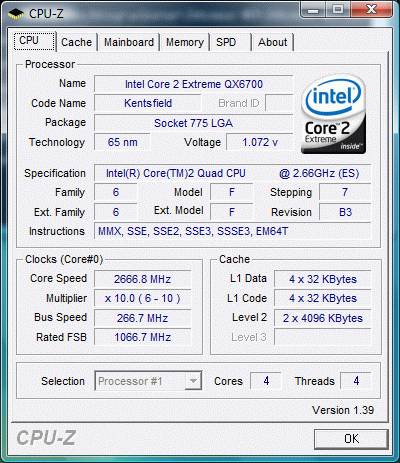Vista: Benchmarking or Benchmarketing?
CPU
We took three different processors to compare the results of the CPU index with some of our own benchmarks. The first processor is a single core Pentium 4 560 running at 3.6 GHz. We also wanted to add a dual core processor, and picked a Pentium D 840 at 3.2 GHz. Finally, a Core 2 Extreme QX6700 quad core at 2.66 GHz and Core 2 Extreme X6800 dual core at 2.93 GHz represent state of the art processor technology.
Obviously, the Core 2 quad core processor reaches the maximum CPU experience index possible today: 5.9. The dual core Core 2 at 2.93 GHz comes in at 5.7, and the Pentium D 840 reaches an index of 5.0, which means that it still belongs into the highest index level. But even the three years old Pentium 4 560 doesn't perform bad at all with an index score of 4.4.
As you will see in the benchmark section, the CPU performance indices do not represent real-life performance at all. We used PCMark05 to get some synthetic scores, WinRAR 3.62 to analyze file compression capabilities, XviD 1.12 to transcode MPEG2 into XviD MPEG4 video, Lame 3.97 to encode WAV audio into the MP3 format, and Deep Fritz X to check out performance in a popular chess application.
While Windows Vista rates three of the four processors within the top of the class level of index 5, our traditional benchmark results speak for themselves. They prove that the fastest processor actually is always roughly twice as fast as the old Pentium 4, which means that the real-life performance difference is much more significant than what the Windows Experience Index shows.
Get Tom's Hardware's best news and in-depth reviews, straight to your inbox.

Patrick Schmid was the editor-in-chief for Tom's Hardware from 2005 to 2006. He wrote numerous articles on a wide range of hardware topics, including storage, CPUs, and system builds.



